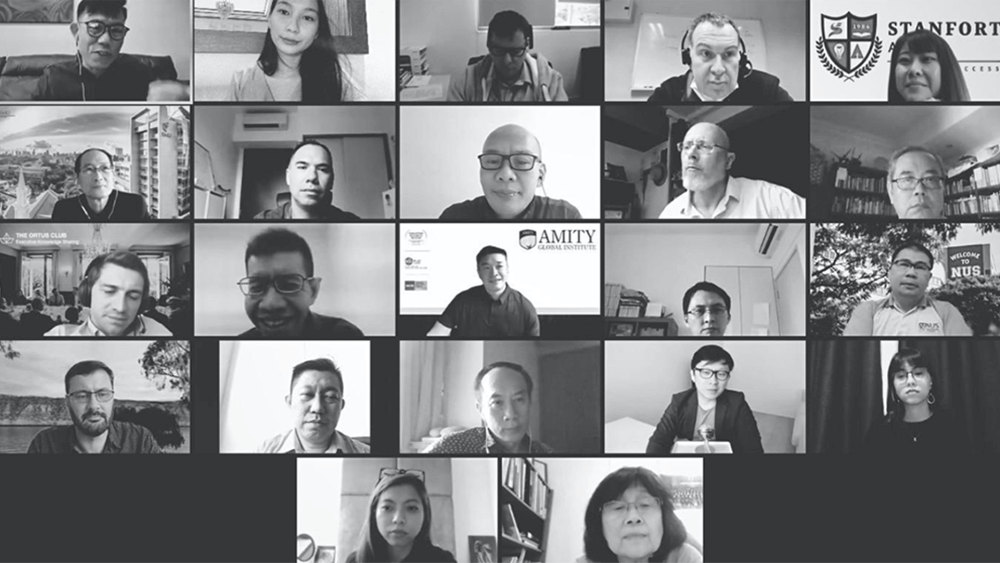
The Education Leaders’ Virtual Roundtable in Singapore on the 25th of June 2020
Like everyone else, International marketing company The Ortus Club, which specializes in knowledge-sharing events and roundtables for the c-level, transitioned to digital events during COVID-19.
Here the company shares five lessons staff members have learned along the way.
Digital events require more staff — Physical events for 15 people typically only needed two people at each event to do registration, liaise with the venue, and welcome guests. Virtual events, however, need at least four to five, given the numerous technical tasks involved, the stricter agendas, and the various participants all seeking assistance at the same time.
Sessions need to be shorter and on time — The online audience expects everything to start and end on time. If an invite says that an event will begin at 11 a.m., everyone will expect for things to start at 11 a.m., or they will log off the platform. At physical events, people are more forgiving and open to waiting for those who are a little late. They’re also more willing to stay longer to network after each session at physical events. In the virtual events world, we’ve found most people leave after one hour sharp, so Ortus has revised programs to last no longer than 60 minutes and ensured that facilitators stick to the schedule. Presentations and long monologues have been removed from all agendas in favor of interactive knowledge-sharing discussions. A virtual waiting room is created for each event so participants can listen to music while preparing for the debate.
More preparation is necessary — Different countries have different connectivity and platform restrictions. This has meant that every single virtual event needs to go through a dry run with each client preparing for the actual day to ensure that the presentation, the platform, and time allotted all worked perfectly.
Keeping participants engaged online is much harder than keeping them engaged in real life — Ortus had to quickly come up with features to replace cocktails and canapes to keep people entertained. To make sessions more compelling, we’ve hired live illustrators to draw out the top points of the discussion, keeping the participants entertained with scribbles and quotes from the event; interactive breakout rooms that split the guests into smaller groups so everyone has a chance to participate; challenging polls and fun games like Kahoot to run online quizzes; and simple ice-breaker questions, like What was the last thing you watched on Netflix?
Zoom’s chat function also helps in many ways. For Ortus events, project coordinators can talk with everyone privately, handling all technical concerns. This functionality is also great for attendees who don’t feel like just jumping into the conversation or have a poor connection, allowing them to participate via text.
You need to find ways to maintain the spirit of a real event and make it more concrete — The Ortus Club started sending out physical welcome packs to each participant before the event. These came in the form of elegant booklets with explanations on how to access the event, information regarding the timeline, and further details about the theme. In addition, we’ve sent out international gift cards, wine, coffee packs, and chocolates on behalf of clients — a memorable way to celebrate an event they shared and build relationships with clients and sponsors.
